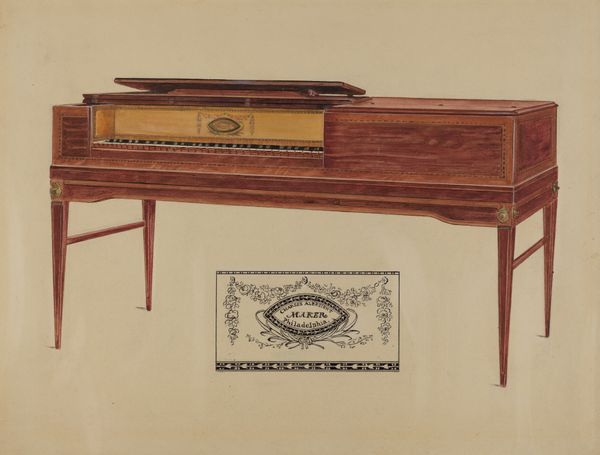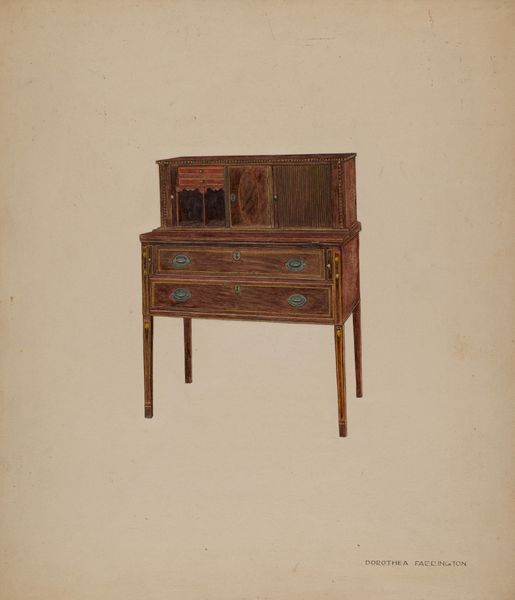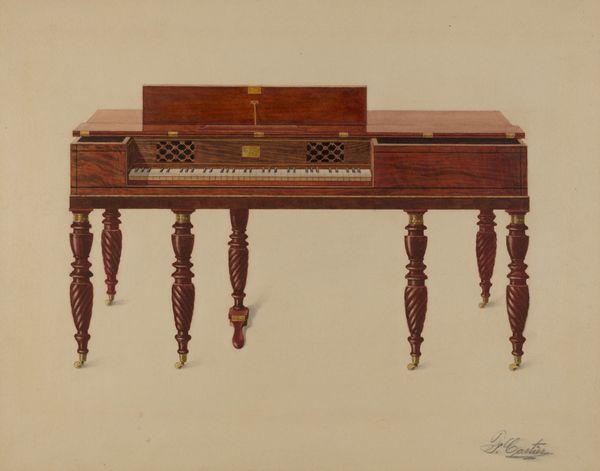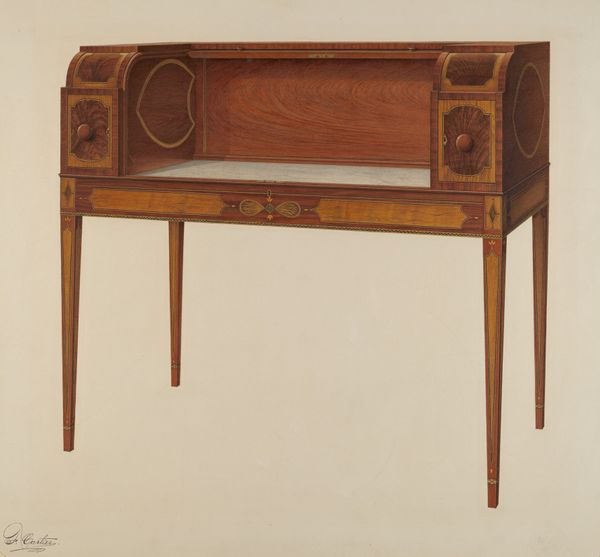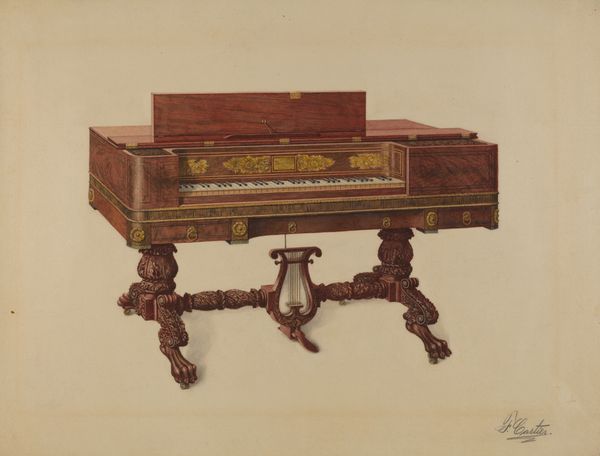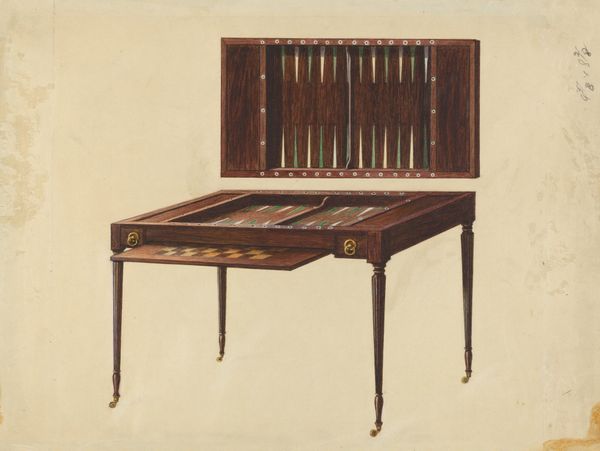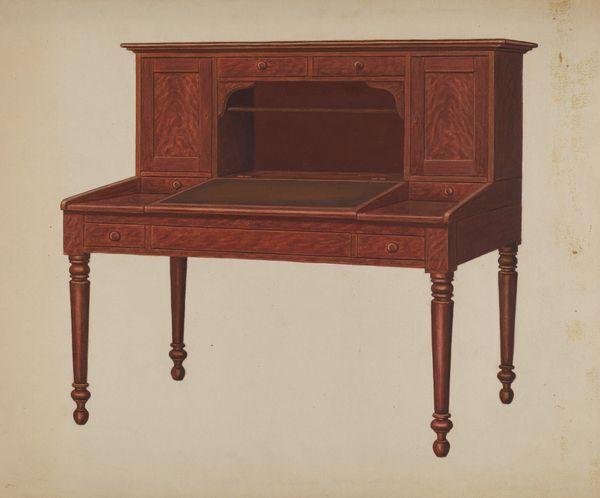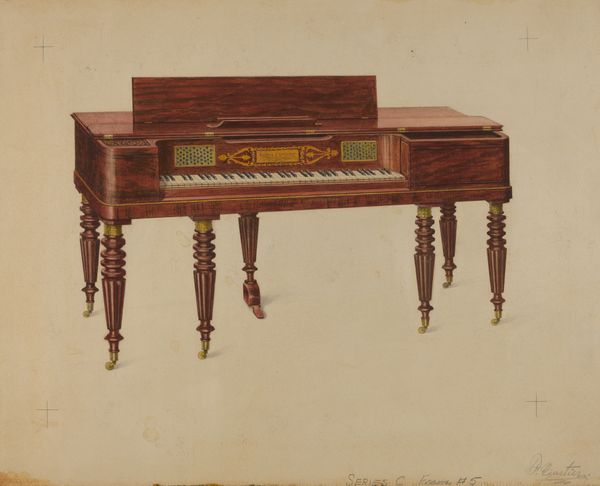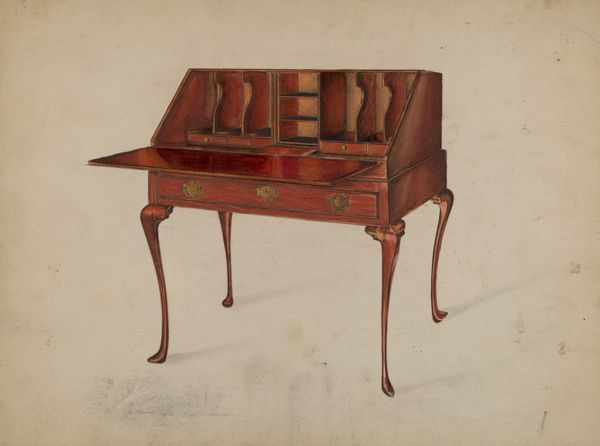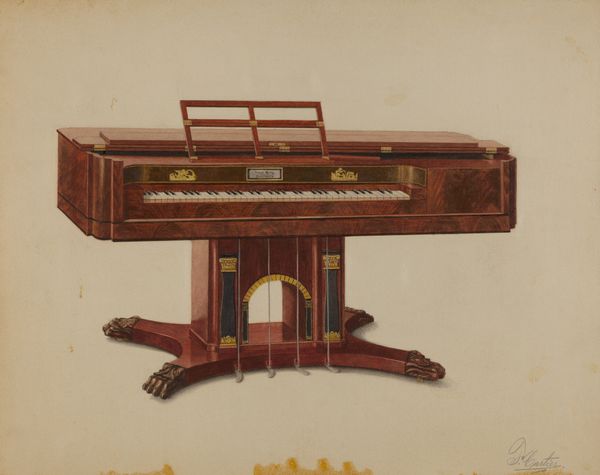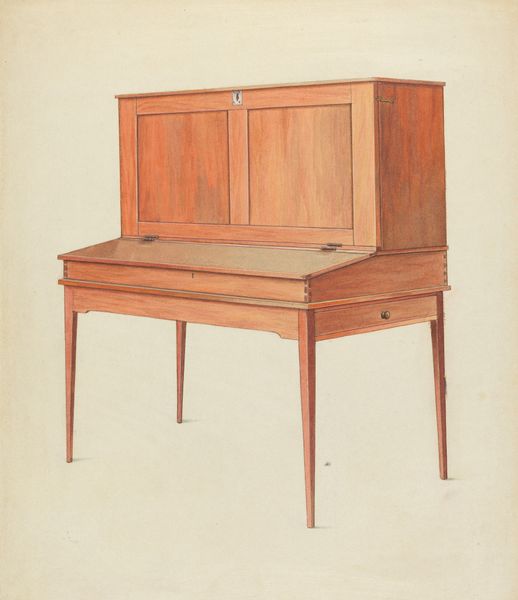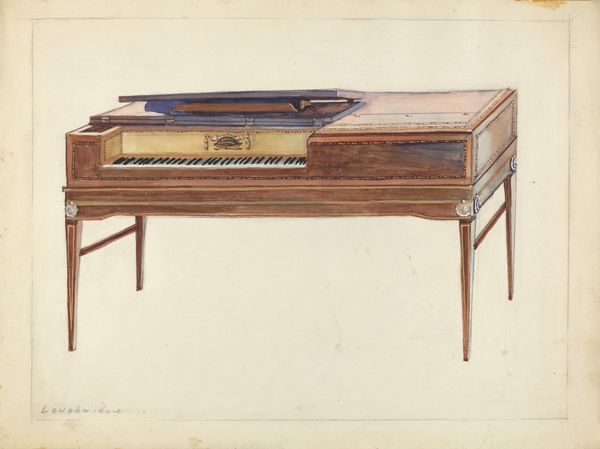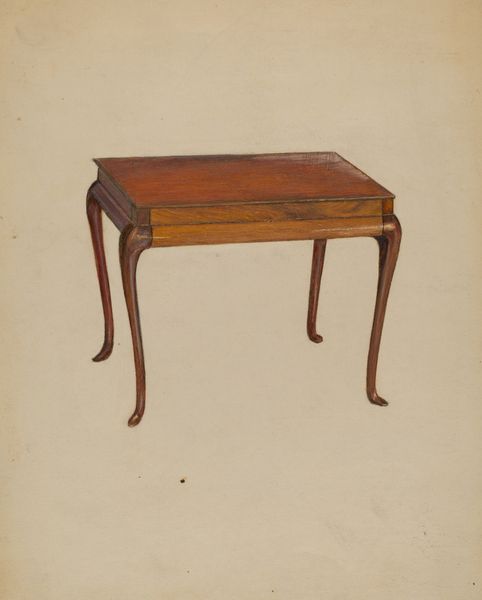
drawing, watercolor
#
drawing
#
water colours
#
oil painting
#
watercolor
#
academic-art
#
watercolor
Dimensions: overall: 22.9 x 29.3 cm (9 x 11 9/16 in.) Original IAD Object: 67" long; 27 7/8" wide; 33 3/4" high
Copyright: National Gallery of Art: CC0 1.0
Curator: Cartier Ferdinand, around 1936, rendering a peculiar looking piano forte here in watercolor, of all things. Editor: It has a strangely melancholic feel, doesn’t it? Isolated. Stark almost. Like a musical specimen pinned for study. Curator: Well, that almost nails it! I mean, what does it even mean to render an image of a piano in this detached way, at this time? Music should invite and liberate, shouldn't it? It should draw communities closer... Instead we are left with something clinical. The coldness reminds me a little bit of Neue Sachlichkeit in Germany at the same time... an unvarnished perspective. Editor: Exactly, stripped of ornamentation... though, the woodwork itself looks ornate enough, as if flaunting its wood grain—that might even be considered the 'ornament', actually. It makes you wonder where such an object fits into the context of art during this period. And speaking of which, look at its awkward structure; you can see through parts of the table because some parts are literally missing... Curator: What's also missing is a musician! Or someone to polish the damn thing. But that is what draws me to this piece in the end—there's such humanity despite the distance it creates. There are so many potential stories resonating in that vacant chair. The owner, who did he love and what made them suffer, I wonder. Did someone learn a Chopin waltz here? Editor: That invites an intriguing debate. Does isolating this single instrument—devoid of all human interaction, but brimming with artistic detail and care—make us actually notice music's value to community? The way memory infuses object through our shared humanity... Maybe, then, Cartier is trying to elevate a sense of belonging via solitude. Curator: You know, it might even be more complicated than all that... but what a thought... a celebration of solitude... within an absent melody. Thanks for expanding on that, maybe it really has to do with hope beyond isolation after all.
Comments
No comments
Be the first to comment and join the conversation on the ultimate creative platform.
